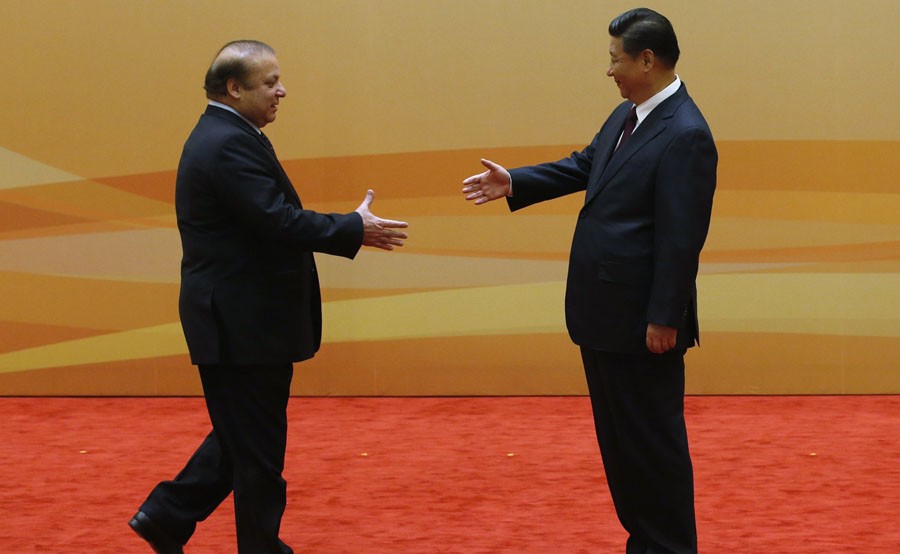
Pakistan’s deepened ties with China, given the CPEC project, have been drawing criticism from the very beginning

"Chinese economy truly developed on the base of its rival US’ demand. In terms of trade and commerce, you see that there was a mutuality of interest," says Lt Gen (retd) Talat Masood, senior analyst.
"Of course, there were strategic diversions or differences so the US backed India’s rise as a regional power; it also gave more importance to Japan. In other words, there were attempts by the US to check Chinese influence and growth while it was an important trading partner for the US."
Taking Masood’s arguments further, Dr Hasan Askari Rizvi, political analyst, points out the complexities underlining effective management of foreign policy in light of the current setback in US-Pakistan relations, "Your job is to make space for yourself. The foreign policy environment will not be shaped according to your whims but you need to figure out areas of cooperation and ways of engagement."
"What, for instance, keeps Pakistan from improving its ties with Iran with whom Pakistan has no issues on territory? Why is there still a strong element of mistrust there?" he asks.
Dr Rizvi’s comment hints at Pakistan’s foreign policy obsession with maintaining Saudi and Chinese leanings which appears to be diminishing its options. India, which also looms large when it comes to Pakistani foreign policy, has been making notable strides with several countries in East Asia; but the Pakistani government’s disinterest in leveraging diplomatic momentum to East Asian countries is apparent.
India shares strong ties with the ASEAN, while Pakistan lags behind significantly: The India-Japan Special Strategic Partnership and the India-Vietnam Strategic Partnership along with South Korea is also a strong front for the China-Russia nexus.
Pakistan’s deepened ties with China given the $50bn CPEC project, hailed as the backbone of Sino-Pak trade relations, have been drawing criticism from the very beginning.
"The corridor is primarily of benefit to China as the Chinese need trade access to avoid the contentious and expensive route through the South China Sea but there is the upgradation of the GT Road, for instance, especially the patch from Multan to Sukkur and Lahore to Multan and the expansion in Pakistan’s power generation capacity which will help us as well," notes Dr Hafeez Pasha, economist.
"But there is a need to assess whether this expansion in Pakistan’s power generation capacity that is supposed to happen with CPEC will boost Pakistani exports."
He puts Pakistan’s economic reliance on China in context by saying that the country has not been able to attract foreign direct investment which is clocking in at about $2b. "We have had to bend over backwards just to keep things going," he remarks.
Read also: Editorial
However, Dr Rizvi maintains that "economic weakness cannot absolve Pakistan of its inability to manage foreign policy."
Dr Pasha asserts that there is a need for developing ‘an explicit focal point’ when it comes to the progress on infrastructure development in relation to the CPEC project. The Pakistan-China Institute (PCI) and the Parliamentary Committee on CPEC, have not served that purpose in his opinion. "There should have been balance of payments projections for the decade for a start," he states.
At the root of this argument lies Pakistan’s inequitable trade relationship with China: After the Free Trade Agreement was signed, Pakistan’s trade deficit with China widened further as exports to China fell to $1.62 billion in 2016-17 from $2.69bn in 2013-14 and imports from China, in contrast showed an alarming increase of 123 per cent, growing from $4.73bn in 2012-13 to $10.53bn in 2016-17.
While the government argued that these imports were all related to CPEC, some economic analysts asserted the government’s figure for Chinese exports was $5bn less than the actual amount. However, this is just official trade and does not take into account the arrival and flooding of local Pakistani markets with smuggled Chinese goods like tiles, ceiling fans, and furniture among others.
"When we talk of China colonising Pakistan like the East India Company did to the subcontinent in the past, we need to understand that Pakistan with its high international debt has always been a colony. China gives you projects but US gives you money," says Dr Rizvi.
According to official data prepared by the Economic Affairs Division, during the last 17 years, the total disbursement of foreign economic assistance (FEA) to Pakistan, including all loans and grants from all creditors stood at $67 billion.
Historically, the US has had a huge trade deficit with China and the economic fate of the two countries is closely related. China has managed to maintain its trade surplus with the US of around $25 billion. This trade gap is closely watched due to mounting tensions between China and the US and could result in a trade war.
"But Pakistan seems to have a very linear understanding of foreign relations," says Dr Rizvi.
"Given Trump’s eccentricities, the Chinese could one day turn around and say we ‘don’t want to buy your treasury bills’ or the US could decide to cut back on Chinese imports. It could happen," posits Dr Pasha.